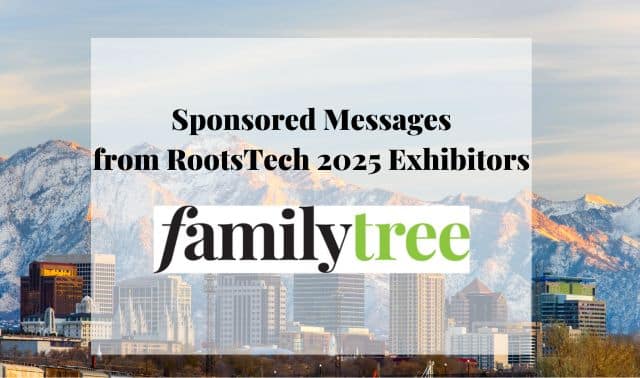Ancestry.com launched a beta version of AncestryDNA, a new and potentially powerful genealogical DNA test, earlier this year, joining a handful of businesses offering autosomal DNA testing for ancestry research.
What makes autosomal DNA so useful for genealogy? Rather than examining a single Y-DNA or mitochondrial DNA family line, autosomal DNA tests look at thousands of locations throughout your entire genome to explore many lines in one test. The AncestryDNA test analyzes more than 700,000 locations in your genome, then presents you with your estimated ethnic breakdown and matching individuals from its results database.
Genetic genealogy companies FamilyTreeDNA and 23andMe also offer autosomal tests examining more than 700,000 genome locations, as well as ethnic analysis and matches from their user databases. What makes Ancestry.com’s test different is the company’s ability to utilize its members’ public trees to help test-takers focus their genealogical research efforts. Still, family historians have some concerns with how researchers will use the combined DNA and family tree information.
Tool time
AncestryDNA’s analysis tools let you explore your test results. The Genetic Ethnicity tool uses the results to estimate the percentage of your DNA that is derived from certain geographic regions around the world (called “admixture”). The tool is based on genetic information taken from approximately 22 world regions and stored in proprietary and public databases.
The ethnicity analysis is being augmented with genetic information from the
Sorenson Molecular Genealogy Foundation (SMGF), which had analyzed tens of thousands of DNA samples—paired with family tree information—over a dozen years from more than 100 countries. Ancestry.com acquired SMGF’s genetic assets this year, along with the SMGF-affiliated GeneTree commercial DNA testing company. (GeneTree will close on Jan. 1, 2013; see the
FAQ. DNA results databases at <
smgf.org> will remain available, but won’t be updated.)
You get Genetic Ethnicity results in a pie chart and as percentages, along with background information. If parts of your DNA can’t be assigned to a world region, a percentage of your ancestry will be labeled Uncertain. As the test evolves, geographic locations may be discovered for “uncertain” DNA.
The test’s Member Match tool compares your DNA to other test results in the AncestryDNA database and send you matches’ Ancestry.com user names and other information. You can contact matches through Ancestry.com.
A significant percentage of shared DNA means two individuals have a common ancestor from whom both inherited that DNA. The number of shared segments of DNA and the length of those segments determine how closely the two might be related. Closer relatives share more and longer segments.
But here’s the most interesting—and potentially the most powerful—aspect of the AncestryDNA test: Member Match compares genetic cousins’ public trees on Ancestry.com to identify shared surnames and individuals. In other words, if John Doe and Joe Smith share DNA, AncestryDNA will compare their public family trees.
If any names or individuals in the trees overlap, John and Joe are notified of “Shared Surnames” or a “Potential Common Ancestor.” The men can focus their genealogical research on these surnames or individuals as potential sources of their shared DNA.
Raising doubts
Researchers have expressed concerns over the quality of family trees on Ancestry.com, and fear that wrong information will point to incorrect sources of shared DNA. But it’s possible that the combination of DNA and traditional genealogical records will help identify and correct these errors. Our ancestors’ DNA traveled far and is infinitely more powerful than the mistakes in our paper trails.
Also keep in mind that ethnicity predictions are just that—predictions. Because of the chromosomal recombination that happens at conception, you didn’t get DNA from every one of your ancestors. Your test results reflect only the genetic makeup of the folks whose DNA you actually inherited—and beyond a few generations, it’s hard to pinpoint which ancestors those were.
Editor’s note: The author received a complimentary AncestryDNA test from Ancestry.com in order to evaluate the product. The AncestryDNA test is in beta, and features are subject to change.
From the September 2012 Family Tree Magazine.


